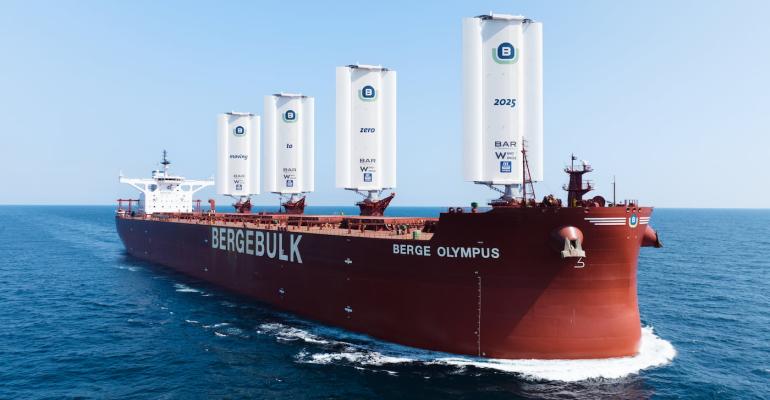Bureau Veritas (BV) has produced a feasibility study to estimate the usefulness of carbon capture from marine engines. BV is a multinational risk management insurer and classification society with a strong maritime profile.
The study was conducted by QIYAO EnvironTech (QIYAO), an environmental engineering firm, and Wah Kwong Maritime Transport Holdings, Ltd, a shipping firm.
Wah Kwong provided two vessels from their fleet to be studied and submitted for approval by BV, one smaller and one larger bulk carrier. QIYAO engineered for each ship the specific carbon capture equipment and storage for the liquid CO2 produced. All the requisite drawings and design experiments were performed as though this was to be a real installation. Everything was created that would be required to actually gain approval to operate these ships with the equipment.
While the technical details are interesting, I found the most interesting part was the financial analysis. It showed that for these ships, carbon capture can be moderately positive for cash flow, under a lot of assumptions, of course. Those might or might not be realistic.
But the most interesting thing for me was the value of the liquid CO2, which could be sold at a substantial p[profit based on current market prices. The value of the liquid CO2 captured is more than twice the savings from emission control. That’s what the study found.
Carbon Capture is a technology that is available now. It can be installed on existing ships with a moderate amount of engineering change. Some cargo space is lost to the liquid CO2 tanks that must be on board, but the value of the CO2 outweighs the lost cargo space value.
So it’s a requirement for this technology to develop the supply chain features at ports for handling the liquid CO2 produced, and to develop markets for it. It’s widely used in industry and should find a ready market. That will unlock the real value in making this type of conversion a reality.
The report can be downloaded below.



